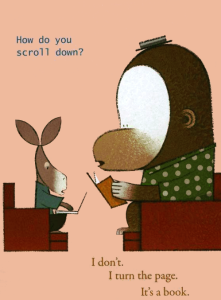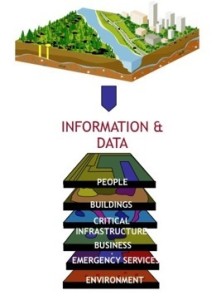“Given the collaborative and integrated nature of this week’s assigned readings, I’m opting to treat them all in one post.”
The addition this week of the Kairos publication on canon reform, Re-situating and re-mediating the canons: A cultural-historical remapping of rhetorical activity, extended many of the frameworks I’ve been applying thus far to our class conversations as well as my OoS. (Even more, as it pertains to teaching composition.) Coming on the heels of an operationalized theory (Spinuzzi), the authors and researchers involved with the creation of this collaborative work — itself the very epitome of a network — evoked a strong link to the Rhetorical Situation theorists we began with (Bitzer, Vatz, Biesecker). However, I think I imagined Foucault’s most throughout these readings. This seemed especially pronounced in the introductory section as the authors argued that “classical canons have always represented only a partial map of rhetorical activity” (Prior et al., “Introduction”). Even in the construction of this node-based composition, Foucault “speaks” to me. After all, this text resists in multiple ways the homogeneity of linearities that Foucault argued were germane to a book-based literacy and culture (with which Wysocki and Johnson-Eilola concur).

Image: It’s A Book” by Lane Smith
As I annotated the text, I remarked how appropriate it seemed that the “Mapping Page” – or the “Start Here” node – serves as the main navigation hub, yet the nature of the web text allows the reader to enter at many other points, driven not by a directed funneling of cultural convention or theoretical bias, but by reader-centered agency. Even so… it also occurred to me that the authors may have also purposely built in familiar rhetorical structures in their decision to place each node / design the overall structural image of the page, possibly creating some of the latent system (a “back door,” of sorts) to the type of navigation system assumptions we text- / book-based readers / scholars might operate under. For example, the introductory text is located in the upper left corner of the web page, which for Western readers signals the “starting point.” This despite the rhetorical choice of situating the “core text” (made especially visually relevant by it’s stand-out choice of red as the color, along with it’s circular shape differentiating it from the rest of the articles (all square).
Perhaps, just as it seems Shipka and Chewning were doing in their visual construction of their research text and Prior et al. suggest by offering multiple versions of the “Core Text,” these authors are creating a “mapping overlay” for us, using both the canon of rhetorical tradition as well as their remapped and reconceptualized view of rhetorical activity. While I do not believe they intend to suggest a 1:1 trade, the layout does seem that the same logic is at work, the same understanding (Foucault’s rules) of how knowledge sharing works for readers. In other words, I wondered if this is a means of foregrounding the multimodal levels of this network of ideas in a way that makes the invisible structures — whether the gaps or the traces –- (Foucault) more visible? Reviewing my Foucault notes, I discovered a statement that captures my sense of these two rhetorical activity theories existing within the same plane. Foucault is writing of objects, but might we see the concept of rhetorical canon / rhetorical activity an object of analysis as well? Of course, this is precisely what Prior et al. seem to be doing in their proof of concept. Foucault writes that “[b]y deriving in this way the contradiction between two theses from a certain domain of objects, from its delimitations and divisions, one does not discover a point of conciliation…. One defines the locus in which it takes place; it reveals the place where the two branches of the alternative join; it localizes the divergence and the place where the two discourses are juxtaposed” (152). At the same time, I imagine Foucault would see the traditional rhetorical canon as every bit a “traditional history of ideas” (166), a force of sorts that hides or resists the types of “discontinuities, ruptures, gaps, [and] entirely new forms” (167) which Prior et al. propose as necessary to the transformative effects of technology and multimodalities. Through this juxtaposition of theories, the Prior et al. collaborative text (could we even refer to this as an “event”?) seems familiar as a “redistributions” (Foucault 5) of the familiar nodes of rhetorical activity.
The authors’ definition of CHAT is based on activity theory, so it is no surprise (but a delightful discovery) that the “Core Text” offers not one but three activities of reading and knowledge making by presenting what at first glance seems to be the same text delivered through three forms: PDF, Audio, and HTML. I took the time to review all three forms, and found that the Audio version provides the “motives” (Miller 152; Bazerman 309) behind the rhetorical activity, narrating as he does the “traces” of the creative context that are lost in the PDF and HTML versions: his daughter crying, music, sounds of nature outside.
Place, then, becomes part of the discourse – a reference to the book Cognition in the Wild – a very relevant concept to analyzing multimodal and networked spaces of work and creativity. His design magnifies his point about the limits of the traditional canonical elements of invention, arrangement, style, memory, and delivery, and addresses his question, “What mediations, what kinds of detours, might delivery of a text involve?” (Prior, “Core Text: PDF” 6). This approach offers us what I might call a more “open” means of applying a sense of reading and/or texts as engaged with a system of networks, a map which demands we consider a complete “remap the territory” (Prior, “Core Text: PDF” 17) that we call rhetorical activity instead of a “retrofit,” in large part due to the binary framing pattern of speaker / audience on which the original canon was built. Given the complications and multiple possibilities for identifying just the act of “reading,” what Prior refers to as “lamination” (“multiple frames or fields co-exist[ing] in any situated act”), such thinking carries considerable weight for our work with networks.
Prior’s “Remaking IO” builds out from here, providing a case study in which such a remapped canon might apply to multimedia tests. However, I did wonder once again: are we still relying on the basic “genetic” elements of a traditional canon – the way we refer to language, text, author, reader, reception all seems to suggest that there is a multi-dimensionality here which may still rely on much of the same knowledge base. I was reminded of the 3-D chess set in Star Trek. The pieces in this 3-D game are the same, as is the goal, but the board has changed and therefore requires us to re-see the connections and possibilities from a very different sense of motion (potential energy of nodes once again – activity theory). With the new “board,” some new moves are now accommodated, and the flow of activity has been altered – or has it merely been expanded? This is the image I think of when I read Prior’s explanation of remapping and lamination.
Moving on to Van Ittersum’s Data Palace, dealing with another canonical element – memory – provides a pivotal tool for applying this concept. Van Ittersum writes that one goal of CHAT is to “direct our attention” to new nodes of activity, expanding our approach to rhetorical activity to incorporate systems terms – the role of the culture (the laminated layer offered by cultural-historical theory) AND the individual (the rhetorical canon’s binary core). Van Ittersum’s work points to an experiment that may impact the way I explore MOOCs in terms of seeing this a system of transfer and navigation, along with tools of memory (like using digital tools to maintain our note-taking records, for example), to see online activity as the means to “mobiliz[e] information within complex systems of tools, environments, situations, and people” – which in every way describes online classroom spaces like MOOCs.
Karen Lunsford’s work on “Remediating Science” in terms of socialization was a fascinating look at the “other” directional flow of this networked means of understanding rhetorical activity, one that rests heavily on cultural-historical theories of genres, I think, when that genre is both the text as well as the delivery / medium. Lunsford demonstrates that while conventions and rules (Foucault, Bitzer, Vatz, Biesecker, etc.) may inform the discourse community’s knowledge framework (i.e., what should a journal article look like), the digital system of publication itself “informs, shapes, and itself evolves thanks to the need to remediate a standard means of discursive practice – sharing of knowledge, a publication” when that publication moves to a digital space (Lunsford). She refers to the negotiations among those involved as an attempt at “alignment” of all the activity taking place (or being forced forward) between nodes – the researchers, journal editors, discourse community members, peer reviewers, publishers. CHAT, then, successfully “direct[s] attention” to ways in which the rhetorical activity of a science journal editor “is situated in concrete interactions” (Prior et al., “What is CHAT?”), framing the ways these nodes function and interact to “co-construct” this culture’s “material, formal, and social practices” (Lunsford).
Finally, as I pointed out in my MindMap blog commentary for this week, the project of Jody Shipka/ Bill Chewning in “Live Composition” modeled for me what Prior et al. refer to as “images of rhetorical activity” (“Introduction”). The purpose of this article seemed to be to demonstrate how applying views made possible by varying network activities (audio narration, text-mediated narration, image-mediated narration), as well as moves to “recontextualize” the event (the act of narrating) and the composition activity at the center of the analysis, cause us to “pay attention” to the nodes of production as well as the text being produced (the artifact). The synchronization of each of these nodes creates yet another distinctive “remediation” of the narrative event, demonstrating and making visible (Foucault) the complexity of this human activity in ways that a traditional process model might not capture in such a degree.
The article is multifaceted, and at times seems to be approaching the text from multiple entry points. The introduction sets the stage to begin “rais[ing] questions about whom and how many people are recognized as active participants in the production of a process narrative” (Shipka and Chewning). Each iteration privileges different information and lenses, whether the student voice, the teacher’s curricular designs, the researcher, or the reader’s response / interaction. Further, just as the CHAT lens is designed to do, the authors point to “the importance of attending to what participates in the production and reception” of this narrative. Their attention to the types of “mediations …[and] kinds of detours” that might be produced through these means are also under scrutiny (Shipka and Chewning).
At the forefront of my mind as I was navigating (not “reading”) this text, I found myself recalling the importance of Foucault’s attention to the “here/not here” of trace as part of conceptualizing discourse and history. In addition, I was reminded of Spinuzzi’s comments on disruption/innovation via “resistance…and chaos” (20) –- both in the way the authors describe their motivation behind the classroom activity at the center of this piece, as well as in the very design of the delivery.
Such disruptions were also part of my experience as a reader of Shipka and Chewning’s rhetorical activities in the form of their article’s design and flow. For “Telling 4,” I found myself at an impass when the .wmv file refused to play on my Mac. So in order to “participate” in the telling, I had to circumvent this software issue. Perhaps this was an intentional move on the authors’ part, to select a non-universal media player, as a way to suggest (draw our attention to) the barriers, borders, or limitations of the network’s reach? Or perhaps this was simply a glitch, with no rhetorical meaning intended at all. Yet, because we are using the CHAT theory to explore the canon as an activity, rather than static nodes or rule systems, such an event or deviation certainly must become part of the analysis – a continued lamination of parts (Prior, “CHAT”) in this complex human activity of discourse and discourse analysis.
Reading Bibliography:
Lunsford, Karen J. Karen J. Lunsford: Remediating Science: A Case Study of Socialization. In Re-situating and Re-mediating the Canons: A Cultural-Historical Remapping of Rhetorical Activity. Kairos 11.3 (2007). Web. 14 Feb. 2014.
Prior, Paul. “Remaking IO, remaking rhetoric: Semiotic remediation as situated rhetorical practice.” In Re-situating and Re-mediating the Canons: A Cultural-Historical Remapping of Rhetorical Activity. Kairos 11.3 (2007). Web. 14 Feb. 2014.
Prior, Prior, Janine Solberg, Patrick Berry, Hannah Bellwoar, Bill Chewning, Karen J. Lunsford, Liz Rohan, Kevin Roozen, Mary P. Sheridan-Rabideau, Jody Shipka, Derek Van Ittersum, and Joyce Walker. Re-situating and Re-mediating the Canons: A Cultural-Historical Remapping of Rhetorical Activity. Kairos 11.3 (2007). Web. 14 Feb. 2014.
Shipka, Jody and Bill Chewning. “Live Composition: Four Variations of a Telling.” In Re-situating and Re-mediating the Canons: A Cultural-Historical Remapping of Rhetorical Activity. Kairos 11.3 (2007). Web. 14 Feb. 2014.
Van Ittersum, Derek. “Data-Palace: Modern Memory Work In Digital Environments.” In Re-situating and Re-mediating the Canons: A Cultural-Historical Remapping of Rhetorical Activity. Kairos 11.3 (2007). Web. 14 Feb. 2014.


